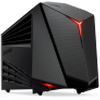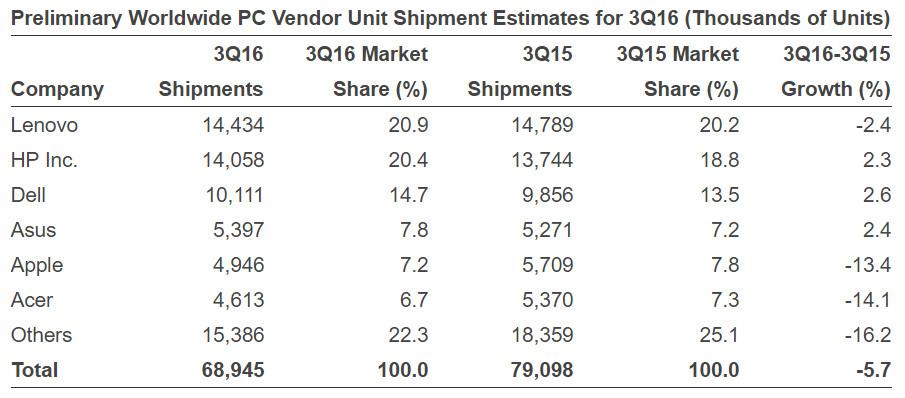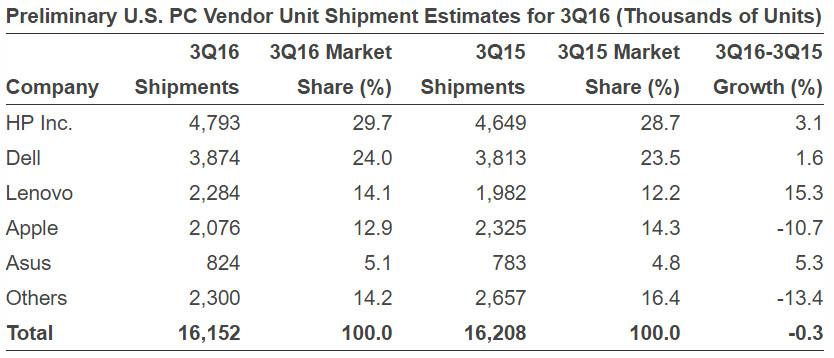Worldwide PC shipments totaled 68.9 million units in the third quarter of 2016, a 5.7 percent decline from the third quarter of 2015, according to preliminary results by Gartner, Inc. This was the eighth consecutive quarter of PC shipment decline, the longest duration of decline in the history of the PC industry.
PC manufacturers faced many challenges, which included weak back-to-school demand, and ongoing low demand in the consumer market, especially in emerging markets.
"There are two fundamental issues that have impacted PC market results: the extension of the lifetime of the PC caused by the excess of consumer devices, and weak PC consumer demand in emerging markets," said Mikako Kitagawa, principal analyst at Gartner. "According to our 2016 personal technology survey, the majority of consumers own, and use, at least three different types of devices in mature markets. Among these devices, the PC is not a high priority device for the majority of consumers, so they do not feel the need to upgrade their PCs as often as they used to. Some may never decide to upgrade to a PC again.
The PC market continues to consolidate, as the top six vendors combined for a record high 78 percent of PC shipments in the third quarter of 2016 (see Table 1). Lenovo continued to be the worldwide market leader based on preliminary PC shipments, but HP Inc. is nearly tied for this top spot, and these rankings could change when final shipment results are published. Lenovo has recorded six consecutive quarters of year-over-year shipment declines, while the nearest competitors, HP Inc. and Dell, have recorded shipment growth since the second quarter of 2016.
The stabilization of the PC business market was a key factor for HP Inc.'s shipment growth, as a majority of its revenue was generated from the business segment. Dell's shipment growth exceeded the regional average in most regions.
In the United States, PC shipments totaled 16.2 million units in the third quarter, a 0.3 percent decline from the same period last year (see Table 2). This is the second consecutive quarter of flat year-over-year PC shipment growth.
"Mobile PCs, which include notebooks, two-in-one PCs and Windows tablets, showed low-single-digit year-over-year growth, but the overall results were offset by a decline of desktop shipments," Ms. Kitagawa said. "Traditionally, the third quarter has been driven by back-to-school PC sales, but back-to-school marketing campaigns have become less effective for driving PC sales. With so many PCs already in the consumer market, U.S. consumers do not feel the need to buy new PCs; many parents hand down old PCs to their kids. While our PC shipment report does not include Chromebooks, our early indicator shows that Chromebooks exceeded PC shipment growth."
Asia/Pacific PC shipments totaled 24.7 million units in the third quarter of 2016, a 7.6 percent decline from the third quarter of 2016. Early indicators show that the PC vendors performed better than in the second quarter as they lowered channel inventory coming into the quarter and replenished stock for seasonal back-to-school demand. PC shipments in China are estimated to have declined 4.8 percent. Consumer sales in China were driven by notebook shipments, while the business market was driven by desktop PCs because of cost and computing effectiveness.
PC shipments in EMEA surpassed 19.2 million units in the third quarter of 2016, a 3.3 percent decline from the same period last year. The EMEA market's decline was mainly associated with very weak demand in Eastern Europe, Eurasia, and the Middle East and Africa. In the U.K., Brexit had no immediate impact on PC sales, but the depreciation of the British pound against the U.S. dollar caused some vendors to indicate prices will increase through the end of 2016 and into 2017.
These results are preliminary. Final statistics will be available soon to clients of Gartner's PC Quarterly Statistics Worldwide by Region program. This program offers a comprehensive and timely picture of the worldwide PC market, allowing product planning, distribution, marketing and sales organizations to keep abreast of key issues and their future implications around the globe.



